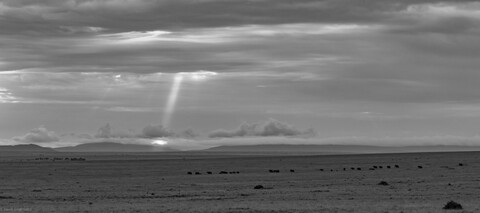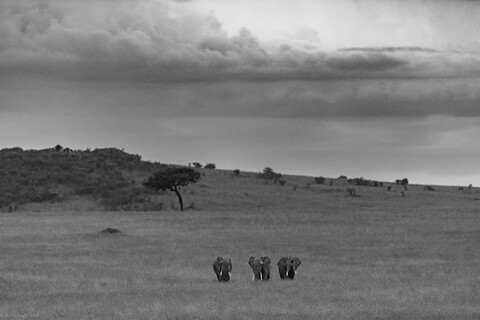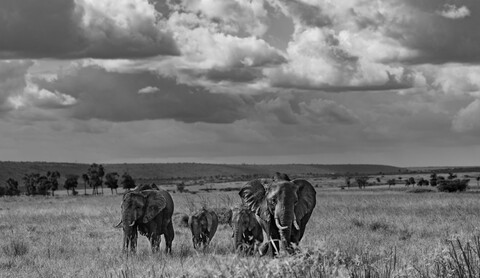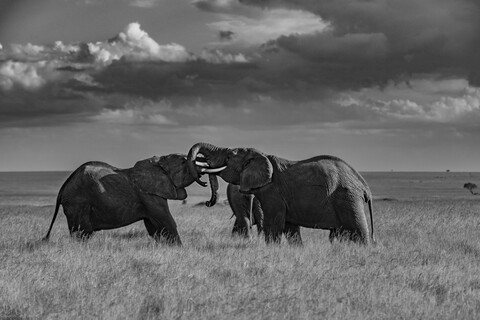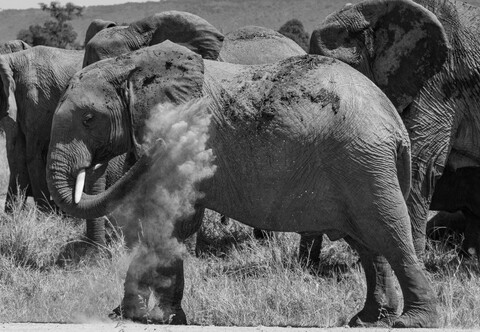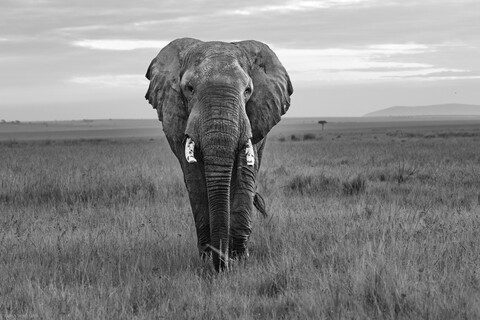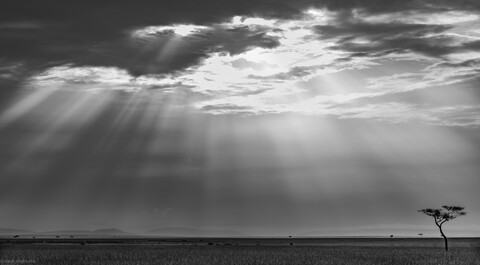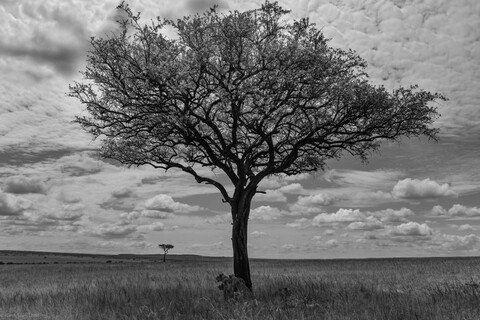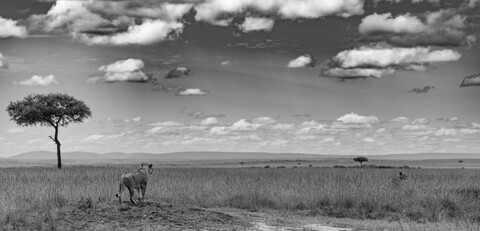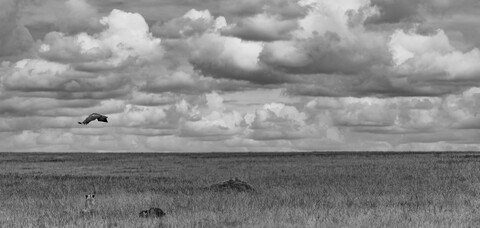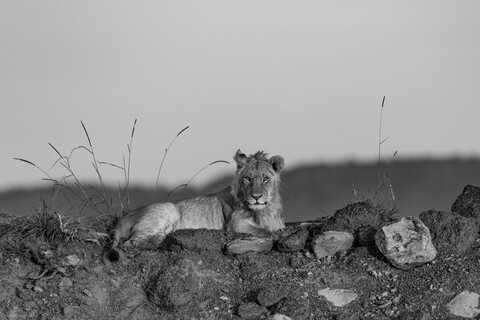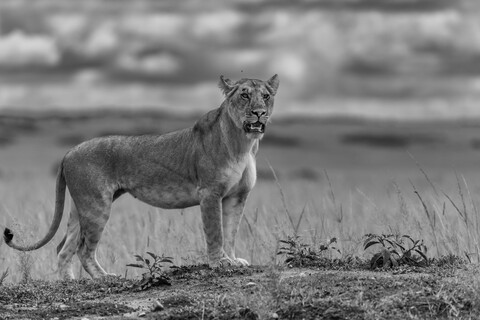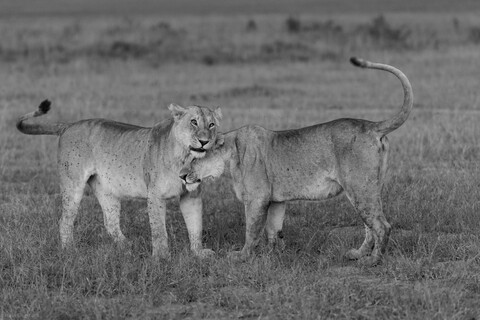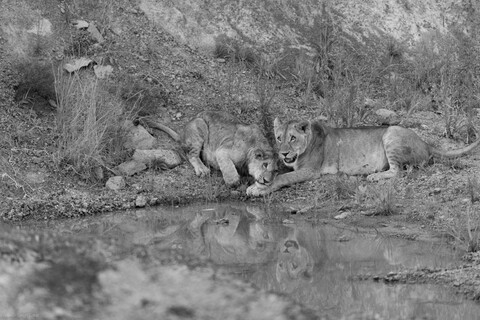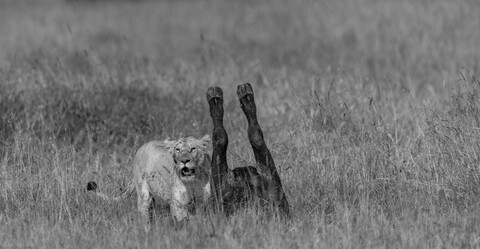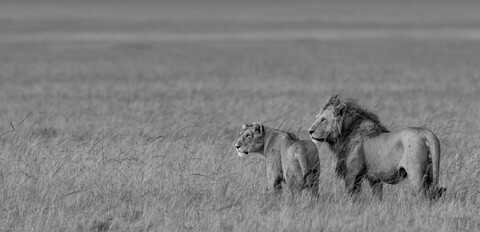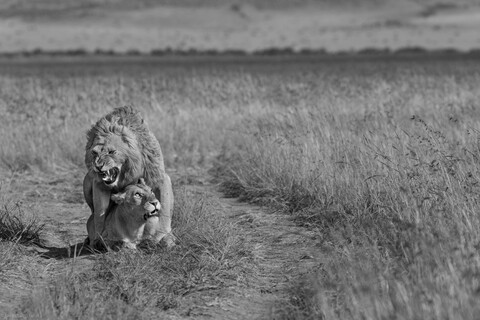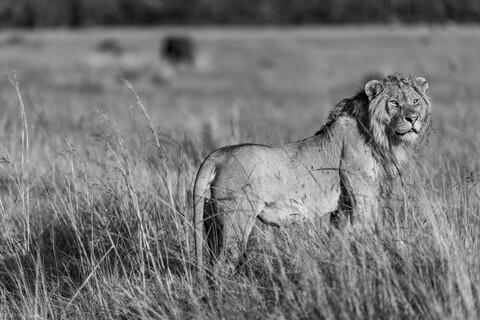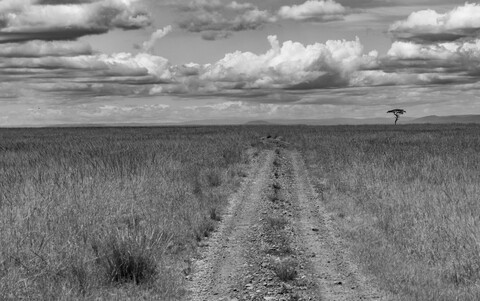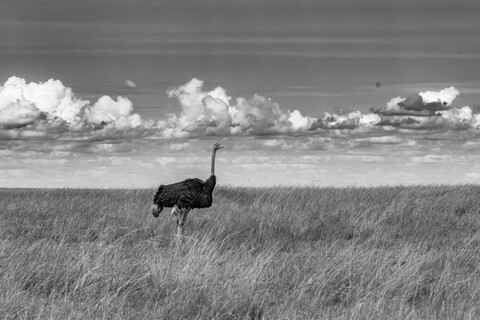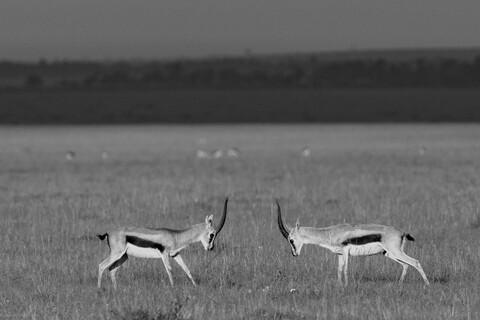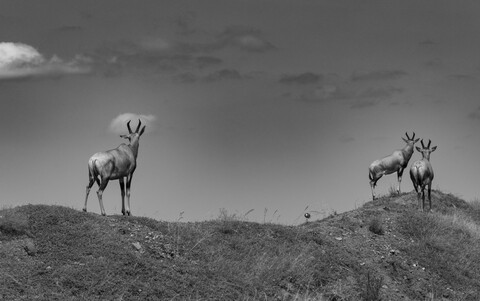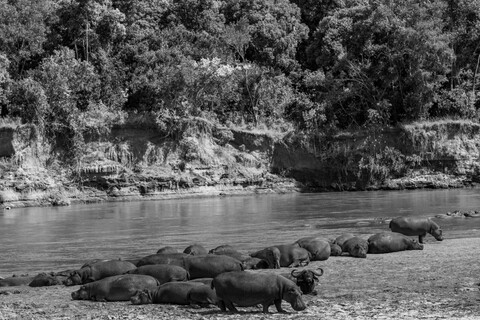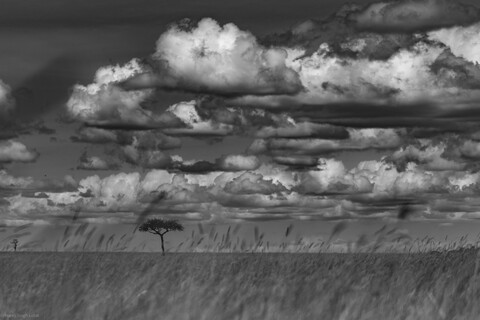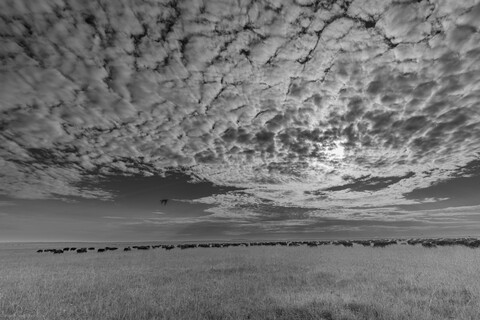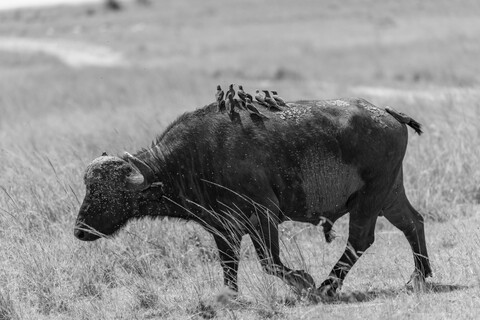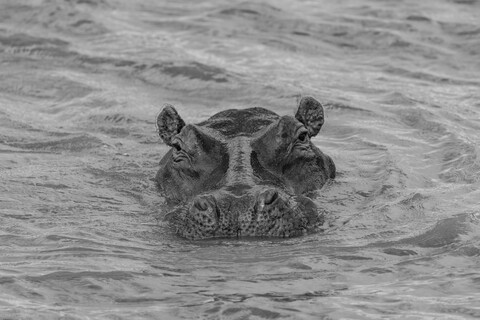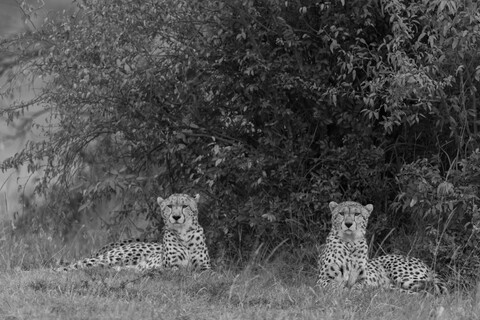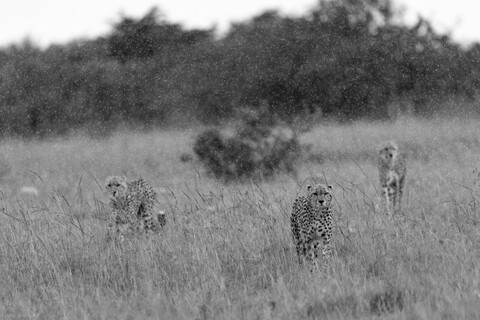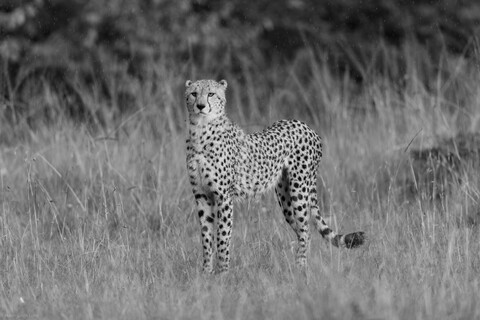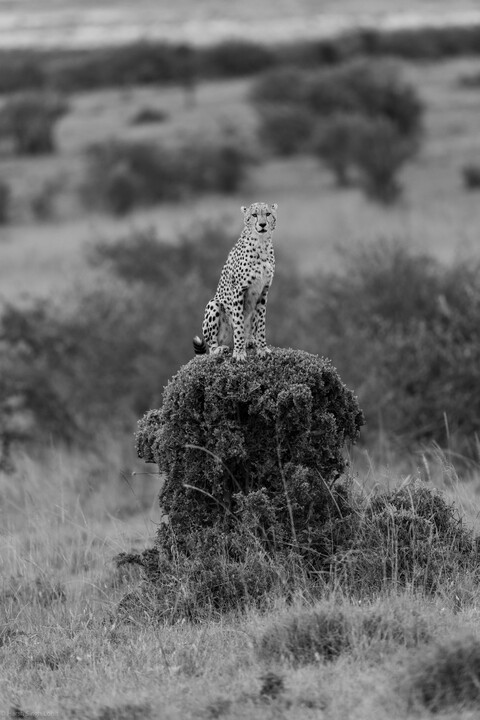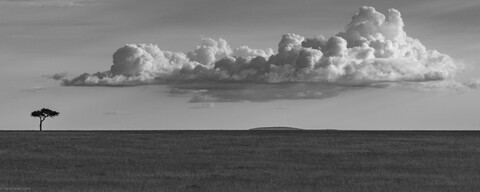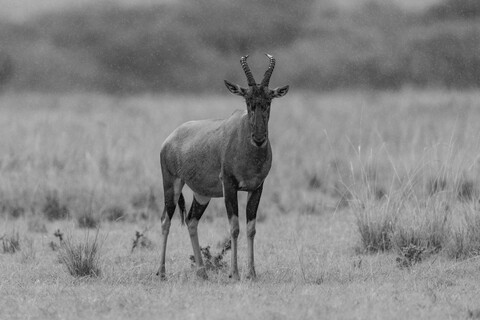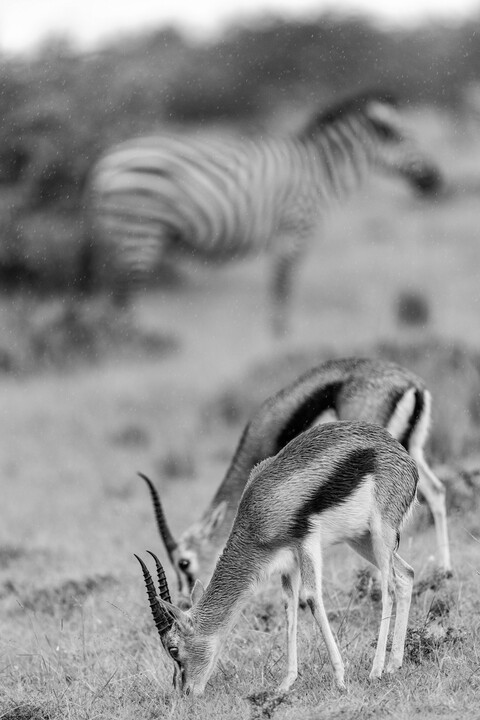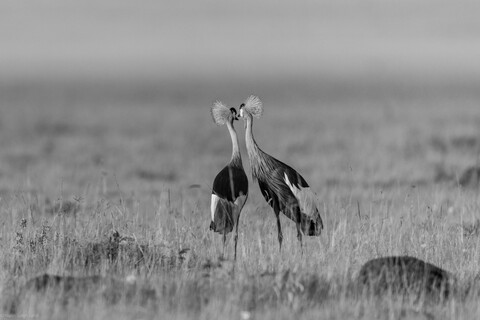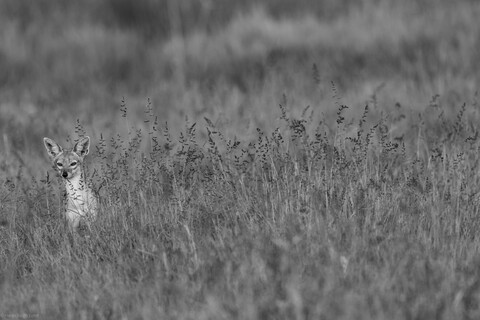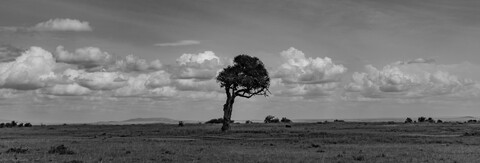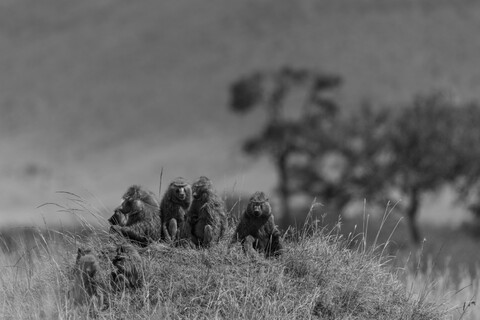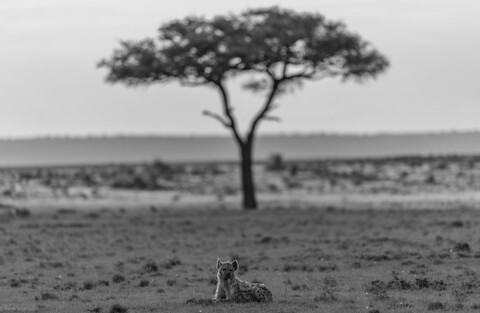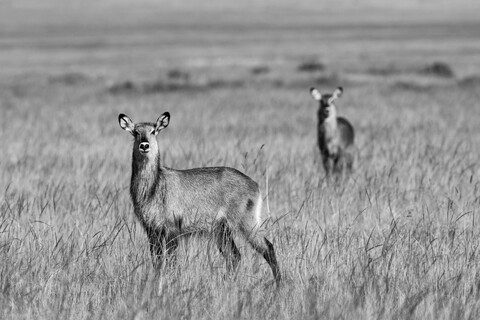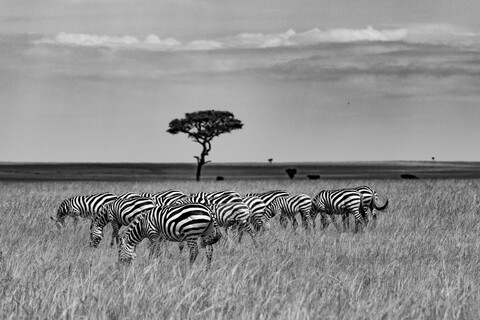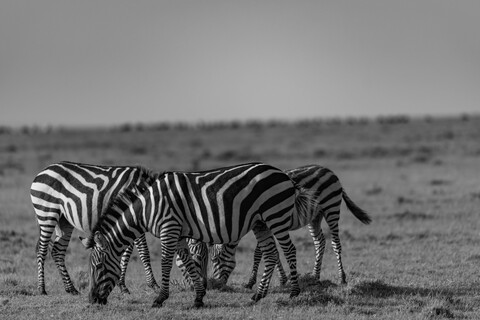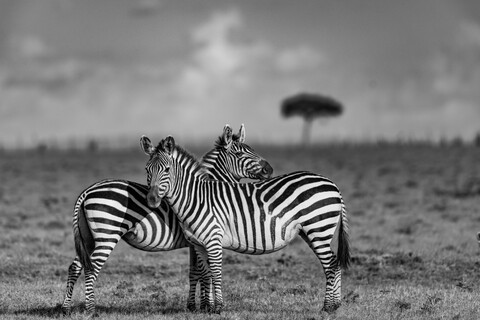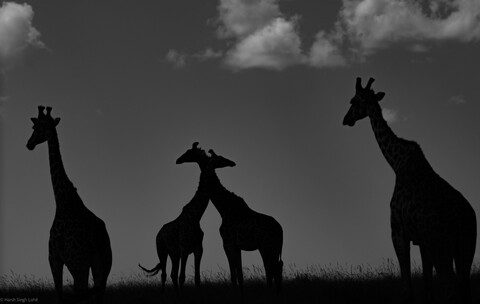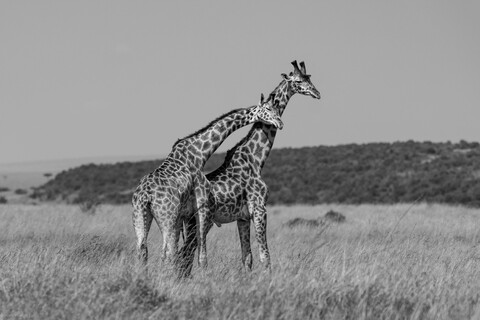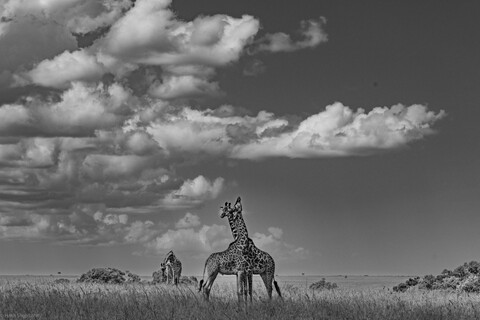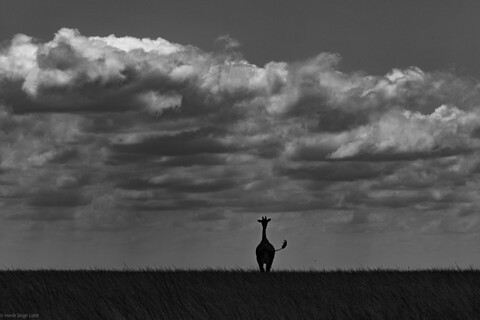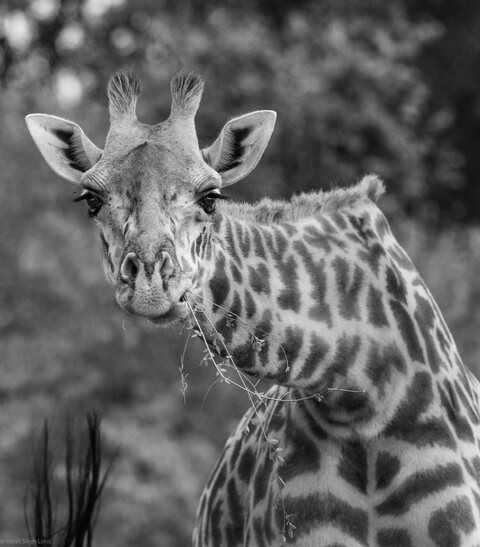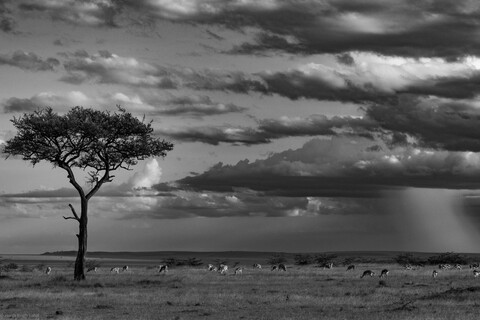Masai Mara, Kenya
It isn't easy to put into words what the first sight of the Masai Mara grasslands does to the mind. I was mesmerised. Struck by the beauty of 360 degrees of openness, one desert date tree standing in solitary majesty, with the most beautifully dense and black-and-white-and-grey clouds covering the horizon, amidst the harmonious silence of nature. Slowly, the silence started to speak to me; it unfolded its secrets as I settled in. Rabab and I were there at the end of May, and the rains were yet coming down. I had planned my visit at this time because I knew the clouds and the horizon would make for the most evocative images, not easy to come by in the tree-heavy Indian forests. Slowly, my eyes, ears and the hidden sense started to engage with this new ecology. We saw scores of species of birds, including the black-headed heron, grey-headed bush shrike, ground hornbill, vulture, ostrich, secretary bird, Marshall eagle, red-necked spurfowl, lilac-breasted roller bird, crowned crane, winding cisticola, grey-headed bush shrike, and the lilac roller. We also made acquaintance with a fantastic variety of animals - leopard, cheetah, lions, elephants, the African buffalo, wildebeest, hartebeest, Thomson's gazelle, impala, topi, giraffe, hippo, crocodile, hyena, mongoose, baboon, and fox. To Indians used to an equivalence between dense forests and wildlife, the Masai plains are a revelation that nature speaks to us in so many different languages, each with its very unique beauty. And there are the clean rivers – Mara, Talek, the many perennial tributaries and rain-fed rivulets – as well as isolated clumps of dense forests that grow along this water source.
I took full advantage of 12 days in the Masai Mara, setting out each day at 6 am and returning in the evening at 6, accompanied by a wonderfully knowledgeable and experienced guide-driver-attendant. The camp packed a breakfast and lunch that kept us going till the evening, which we would leisurely partake under a tree, usually next to a river. We would often sit for two hours or more at a carefully chosen spot so we could hear the grasslands speak to us without the industrial sound of our vehicle's engine. We knew, and hoped, a cheetah or a leopard or a lion pride would return to the point we were at, and we would keep a watch. It was amazing to do this with the realisation that this was the land from which all humanity had sprung millions of years ago.
There were innumerable memorable sights, some of which I will recount. We came across multiple lion prides, at times tracking them for the entire day to see and understand the rhythm of their lives. Then, of course, elephants anywhere are the most visibly kind and caring community that one can think of. What is etched in my mind is the image of the loving mother - the lioness with her cubs, and the female elephant tuskers, gentle with her little ones and fierce to strangers. When you track an elephant herd over many days, you come to understand the intelligence of these animals and the care the matrons take to protect the children of the herd. This caring extends not only to their children but also to all the calves in the community. It's magic to see the little one walking briskly in the shadow of her mother, with her trunk holding on gingerly to the mother for security, never veering away. Elephants love to feed on the slender and beautiful red oat grass in full bloom after the rains, so very similar to the oats that I grow on my farm. It occurred to me that this is likely where humans first cultivated a form of this grain that they could consume. Then it spread to the rest of the world, as so much else has from Africa. There is also the tall elephant grass and Papyrus reeds with orange flowers, in which one sees elephants feeding. The adult African bull elephant is a majestic and solitary animal, with some possessing enormous tusks that belie their generally gentle nature, except when in ‘masth’. Very similar to the elephants and cats I have seen in India, but it’s different when you can see them in the open and track them for hours until you say, "Enough for today."
One late morning, the axle of the vehicle we were in broke. As we waited an hour for the replacement vehicle to arrive, I found myself in an unusual situation: 8 lionesses and their cubs were sitting in the shade of the car within 5 feet of me. They were used to tourist vehicles, and after some piercing looks into my soul, they looked away. We tracked lions and lionesses making the most of their buffalo kill. We followed three young cheetah sisters across the plains, one making a wonderful image sitting on a bush and another on a rock. We followed an adult cheetah stalking and ever so carefully keeping up with a herd of very alert Impala who knew that something was wrong but didn't know exactly what. We saw the liquid beauty of her movement as she made an 80-metre sprint at the fastest speed that you can imagine, even though this hunt failed. You felt sorry for the cheetah and glad for these gentle impalas. That same afternoon, though, we came across that cheetah sitting in the shade of bushes close by where we had encountered her earlier, resting after having fed on an Impala calf. For every hunt that is successful for the predator, many aren’t. It was engrossing to see a lioness stalk a herd of zebra over 300 meters in 1 hour, slowly, gradually reaching within 50 feet of them, but they took off before she could make her final charge. We saw a leopard perched high in an Abyssinica tree with an impala dinner. He fed on it for quite some time, till his attention was diverted by visitors like me, and the kill slipped to fall from the tree. The leopard ran down in a flash, but the hyenas waiting down quickly took it before he could retrieve it!
Another most exciting experience was the mating of a lion and lioness; we trailed the couple for 4 hours. Both knew their roles: the lion followed, the lioness knew when to stop, and the passion of mating took over. A rest followed, and then it started again. It went on until we had to head back to the camp, and it would continue for many days until the lioness knew it was done, as nature had given her the biological signal to stop, and the lion was turned away.
Such is the rhythm of real life laid bare without human comforts, with its simultaneous gentleness, cruelty, and tireless effort for survival in one unceasing flow. Watching animals for 12 hours a day and listening to the sounds of their nocturnal life for the other 12 hours immersed me in nature in an unprecedented manner. It brought home again, if I needed a reminder, how important it is that humans make changes in our trajectory of material progress so that the entire range of nature’s children has space. There were many tourists, with the normal share of aggression and crowding, and this was at low tourist season. I was told the number of camps for wildlife visitors like myself has exploded exponentially in the last 10 years. There is no such thing as sustainable tourism; we humans make sure of it.
The African Buffalo is a handsome fellow, moving around in herds of hundreds that fill the horizon in front of you. They seem to move languorously, but when you come back after a couple of hours, they have moved a significant distance. One witnesses coexistence and collaboration in nature with the bright yellow-billed oxpeckers in groups of 10-15 taking a free ride on the back of the animal and feeding off ticks, fleas, and blood from wounds.
Kenya's population has grown fivefold since 1950. Yet, its density per square kilometre is yet less than 100, compared to 965 in the Doab of northwest India, where my community has lived for thousands of years. Kenya has less than 9% of its landmass covered by forests, compared to the 21% that India has, but one could breathe freely in Nairobi as well as in the pure air of the Mara. The average Kenyan I came across was gentler than the people I met on the streets in Delhi and Gurgaon. Nairobi is a short 6 hours away from Delhi, with a manageable two-and-a-half-hour time difference. The weather in Nairobi and the Mara remains salubrious through the year, especially for North Indians used to extremes. I can live with 13-30 degrees centigrade anytime. My friend Nimish Shah has run Travel Affairs (https://travelaffairs.com/) for the past 3 decades from Nairobi. He and his team did an outstanding job of organising my stay; I would recommend them with eyes closed.
I’m planning my visit to Africa in 2026.
